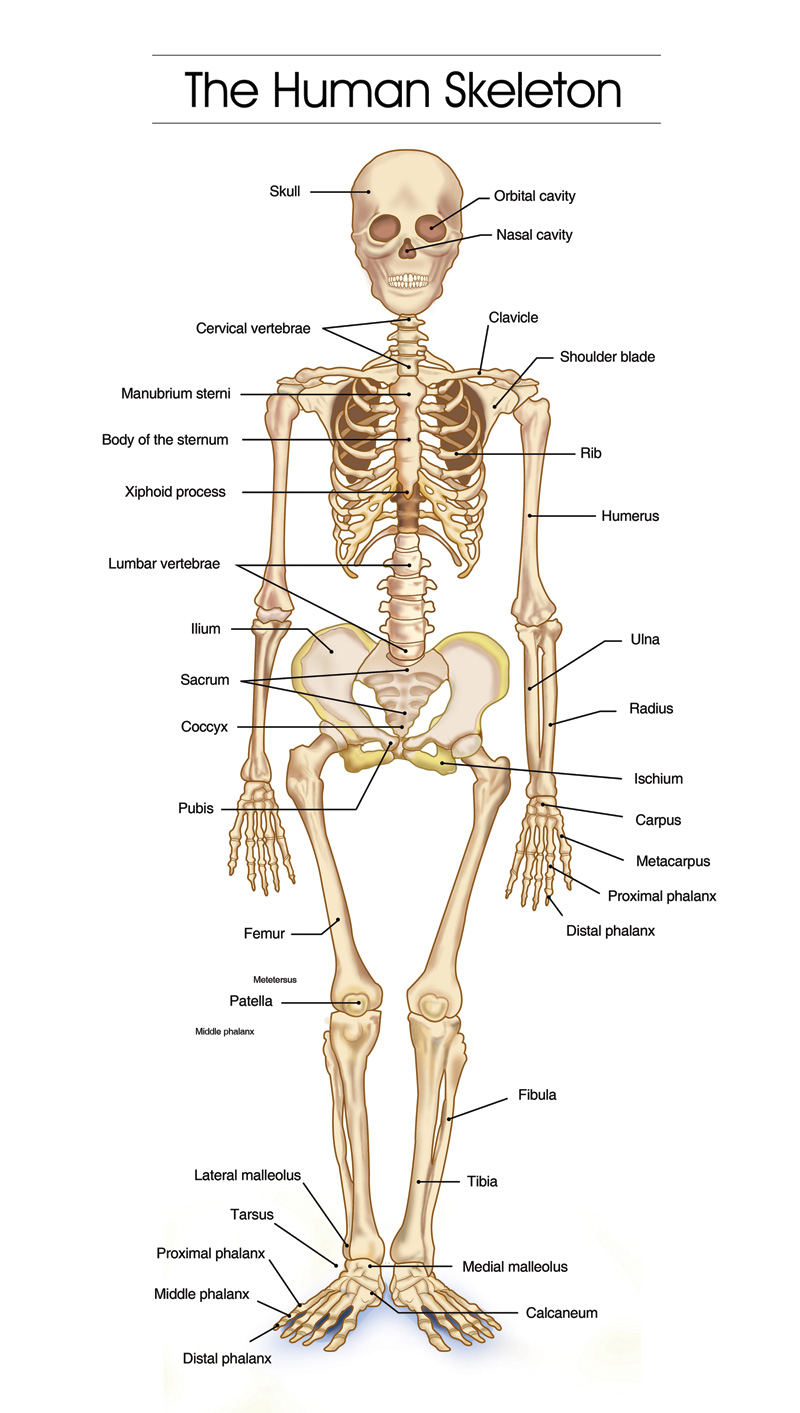Balancing On Your Skeleton
Exercise: A Balancing Act
Do You Take Your Skeleton For Granted?
What does it even mean to "balance on your skeleton"?
Pilates and Alexander Technique teachers often talk about "finding balance." Sometime we may mean this figuratively, when we talk about making time in our lives for work and play, family and friends. Or we may think about trying to balance on one foot in pursuit of athletic or artistic movement. We don't often talk about the balance of simply standing on our own two feet.
But looking at the skeleton, we can see that it functions quite beautifully as an architectural structure.
Our heads balance atop the spinal column. The weight of our upper body is distributed through the pelvis and divided between our two sturdy legs. At the ankle, the heel extends back and the toes spread out in the front to further distribute our weight down into the floor.
Alexander Technique and Balance
According to Matt Pressman, an AT practitioner in Florida, working with the Alexander Technique has been proven to show a reduction in stiffness and pain in low back pain patients in Britain and the United States. What does this have to do with the skeleton? "The Alexander Technique teaches the intrinsic power of aligned bones to support the body," Pressman says. "Bone is one of the strongest materials found in nature.... Ounce for ounce, bone is stronger than steel."
"A student of Pilates who understands the power of their bones to balance is miles ahead of someone working out with no knowledge," says Owner/Instructor Margi Sharp Douglas. "Every Pilates exercise, particularly the standing balancing work on the wunda-chair or reformer is made easier and more effective by employing an awareness of how the bones are balancing. Core muscles actually kick in stronger when a better alignment is found."
What if we were to rest assured that our skeletons were strong enough to hold us up? What if we could trust our skeletons to do their jobs while we work out or even just stand still? Balancing on our skeletons, we could then release all unnecessary muscular tension before we move. Of course we need some muscular involvement to sit or stand upright, but I'm willing to bet that it is much less than we usually think.
Beauty and Complexity of the Skeleton
The skeleton has its own architectural logic. Years can be spent studying the interaction between muscles and bones, nerves and circulation. But try, for now, just thinking about your skeleton.
Try This: A Balancing Act
Find a quiet place where you can concentrate for a few minutes. You can even shut yourself in a bathroom stall, just for a moment, if you need to get away from it all.
Feel your feet on the floor, at a comfortable distance from each other. (It's helpful if you are wearing relatively flat and comfortable shoes.) If you're at home, go barefoot in your living room or out on a patch of grass!
Balance your pelvis over your feet. Now balance your shoulders over your pelvis. Now balance your head atop your spinal column, allowing the weight to cascade down through the front of the spine. If you need to readjust the placement of your pelvis, shoulders, or feet, feel free to do so-- where can you find a place where you feel "balanced"? How does your weight balance on your two feet as they spread out onto the floor?
How much tension can you allow to flow out of your body and still remain standing? You'll be surprised. Your skeleton is remarkably well balanced. You don't need to hold your shoulders up, or your butt in, or your legs tense.
Now for one more element-- you don't need to "hold still." Our bodies are always moving! Our blood circulates, our lungs breathe; why, in tiny microscopic ways we are growing hair and skin and fingernails! Balance isn't static. Think of balancing as an ongoing process. You can allow your body to sway, to shift, to readjust as you continue to seek balance.
- Erika Iverson





